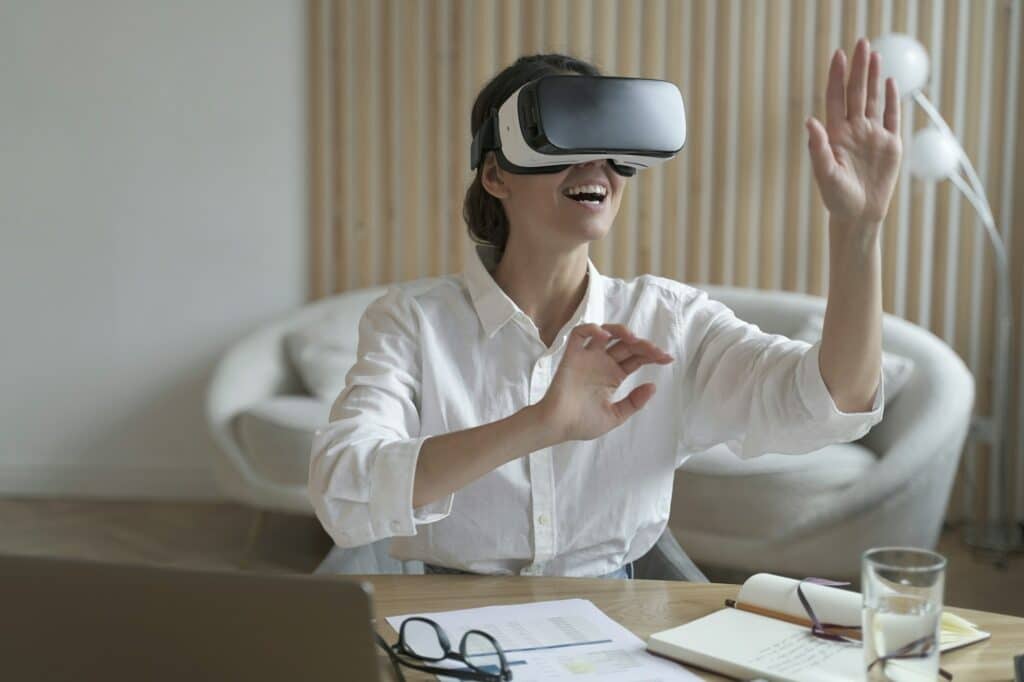Of the many use cases for VR, the scientific world is increasingly using virtual reality to bring their data to life. One such project is VIRTUE, pioneered by the University of California Riverside’s Department of Physics and Astronomy. VIRTUE, or Virtual Interactive Reality Toolkit for Understanding the EIC, allows users to see life at a subatomic scale.
Why We Watch Particle Collisions
At its simplest explanation, we watch particle collisions to learn more about how our world works. Crashing particles into one another can tell us more about how our world works on a subatomic scale. Doing it is expensive, requiring giant colliders, so we also make sophisticated simulations of those collisions instead.
Simulated physics collisions are used everywhere in the digital world, in both science and entertainment. On-screen pixels get batted around by engineers, astronomers, and artists, who all want to model their work after the real world. Most movies feature CGI nowadays, where physics simulators are used to make digital effects act like real objects on the screen. Likewise, there’s the iGaming industry where British sites host thousands of games online. Some of those games like Plinko Go in UK work by dropping a physics-simulated ball through a field of pins. Those pins knock the ball around, affecting where it lands and what prizes the player gets as a result. While basic physics simulations are widespread in the entertainment world, scientists use similar software to try and explore more complex interactions between atoms and subatomic particles, like electrons.

The world’s most well-known particle collider in the world is the Large Hadron Collider (LHC) operated by CERN. It’s a gigantic circuit tunnel that’s 17 miles in circumference, so big that traveling particles hop the border from Switzerland to France four times during its trip. As you’d expect, building and operating one of these takes a lot of time, money, and manpower. Alongside the LHC, there are also EICs – theoretical electron-ion colliders that could reveal even more about the fundamental nature of our universe. The US is currently building the world’s first $2 billion EIC at the Brookhaven National Laboratory in New York. It was this EIC that UC Riverside had in mind when they created VIRTUE.
Scientists at @JLab_News will use the #ElectronIonCollider to investigate neutron spin, an important step in solving some of the universe's biggest mysteries. https://t.co/lhTBdjMmVx
— Brookhaven Lab (@BrookhavenLab) January 11, 2022
The VIRTUE VR Platform
Started by a doctoral student at UC Riverside, their Department of Physics and Astronomy created VIRTUE to provide a relatively simple way to view particle and nuclear physics collisions. VR is a familiar platform to many users and ideal for getting up close and personal with some of the smallest particles known to mankind. While made for VR, the software powering VIRTUE can be run using any computer.
Miguel Arratia, the assistant professor overseeing the project, said: “I anticipate this tool will be immensely beneficial for researchers, aiding them in gaining intuition that can translate into insights during data analysis,” adding that it is “the first time anyone has visualized EIC collisions. Before our work, nobody really knew what the events looked like.”

The project and its results have already received a nod from the Brookhaven National Laboratory, who feature videos captured using VIRTUE on their official website. The simulation purposely contrasts the bright colors of the collider against the dark particles that travel through it, making it easier to see how they behave. Better analysis of EIC collisions could reveal even more secrets of the universe in the future, much like how the LHC helped us discover the Higgs boson particle. When the EIC launches, VIRTUE will be on deck to replicate and simulate its findings for researchers at the other side of the country.
